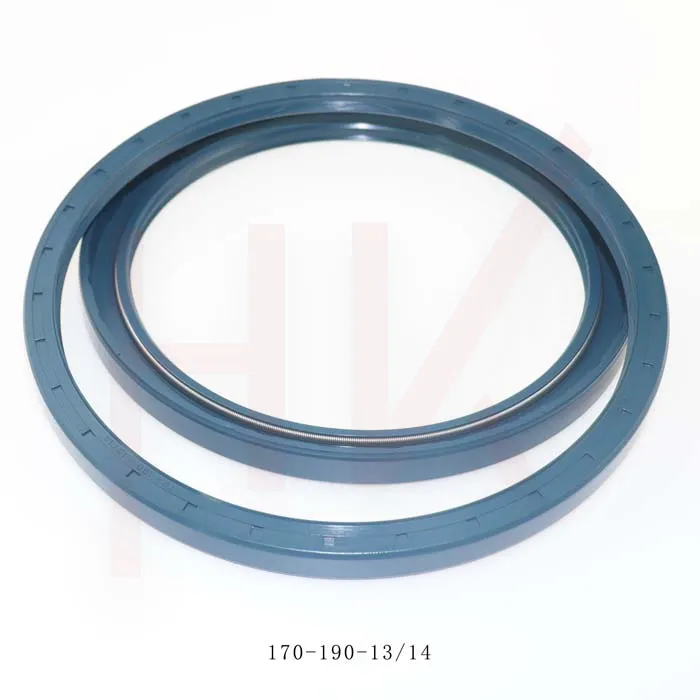Kas . 29, 2024 20:40 Back to list
Hydraulic Cylinder Seal Repair Techniques and Best Practices for Optimal Performance
Hydraulic Cylinder Repair Seals Importance and Solutions
Hydraulic systems are integral components in various industrial applications, from construction machinery to manufacturing equipment. At the heart of these systems are hydraulic cylinders, which convert hydraulic energy into mechanical force. To maintain the efficiency and longevity of hydraulic cylinders, the integrity of their seals is paramount. This article discusses the importance of hydraulic cylinder repair seals, common seal failures, and solutions for effective repair.
The Importance of Seals in Hydraulic Cylinders
Seals in hydraulic cylinders serve crucial roles in maintaining the system's performance. They
1. Prevent Fluid Leakage Seals contain pressurized hydraulic fluid within the cylinder, ensuring that power is effectively transmitted. Any leakage not only reduces efficiency but also impacts the overall performance of the machinery.
2. Protect Internal Components Seals prevent contaminants such as dirt, dust, and moisture from entering the hydraulic system. Ingress of contaminants can lead to wear and tear of internal components, resulting in costly repairs and downtime.
3. Maintain Pressure Hydraulic systems operate under high pressure, and seals must withstand this pressure while keeping the system operational. Properly functioning seals help maintain the required pressure levels, ensuring smooth operation.
Common Seal Failures
Despite their importance, seals can fail for various reasons, leading to reduced performance and premature wear of hydraulic cylinders
. Some common causes of seal failure include1. Wear and Tear Due to friction and continuous movement, seals are subject to wear. Over time, this can lead to surface degradation, causing leaks.
2. Contamination The introduction of dirt, dust, and other contaminants can compromise seal integrity. Contaminants can cause scratches on the cylinder rod or housing, leading to seal failure.
3. Incorrect Installation Improper installation can result in misalignment or damage to the seals, reducing their effectiveness. This can also lead to leaks and operational issues.
hydraulic cylinder repair seals

4. Temperature Extremes Hydraulic systems often operate in environments with varying temperatures. Seals can become brittle or lose elasticity in extreme temperatures, affecting their ability to form a proper seal.
5. Chemical Compatibility Using seals that are not compatible with the hydraulic fluid can lead to swelling, shrinking, or deterioration of the seal material, causing leaks.
Solutions for Effective Repair
When hydraulic cylinder seals fail, timely repair is essential to prevent further damage to the system. Here are some effective solutions
1. Regular Maintenance and Inspection Performing regular maintenance and inspections can help identify seal wear before it leads to failure. This proactive approach can save time, money, and effort in the long run.
2. Selecting the Right Seal Material Choosing the appropriate seal material based on the specific hydraulic fluid, temperature, and pressure conditions is crucial. Materials such as nitrile, polyurethane, and fluorocarbon have varying properties that suit different applications.
3. Proper Installation Techniques Ensuring seals are installed correctly is vital for their longevity. Adhering to manufacturer guidelines and utilizing proper tools can mitigate the risk of seal damage during installation.
4. Implementing Contamination Control Measures Installing filtration systems and using protective covers can help prevent contaminants from entering the hydraulic system, prolonging the life of the seals and other internal components.
5. Training and Education Providing training for personnel involved in the maintenance and repair of hydraulic systems can enhance understanding of seal functionality and the best practices for installation and maintenance.
Conclusion
Hydraulic cylinder repair seals are critical to the performance and reliability of hydraulic systems. Understanding the importance of these seals, recognizing common failure modes, and implementing effective repair solutions can lead to improved efficiency and longevity of hydraulic equipment. By prioritizing seal maintenance and being proactive in repairs, operators can maximize their hydraulic systems' operational capabilities and avoid costly downtime.
-
The Trans-formative Journey of Wheel Hub Oil Seals
NewsJun.06,2025
-
Graphene-Enhanced Oil Seals: Revolutionizing High-Pressure Oil Sealing
NewsJun.06,2025
-
Future of Hydraulic Sealing: Advanced Intelligent TCN Oil Seals
NewsJun.06,2025
-
Don’t Let a Broken TCV Oil Seal Ruin Your Day
NewsJun.06,2025
-
Bio-Inspired Dust Seals for Better Sealing Performance
NewsJun.06,2025
-
Biodegradable and Sustainable Hydraulic Seal Materials
NewsJun.06,2025
-
Top Oil Seal Solutions for Your Industrial Needs
NewsMay.22,2025
Products categories
















